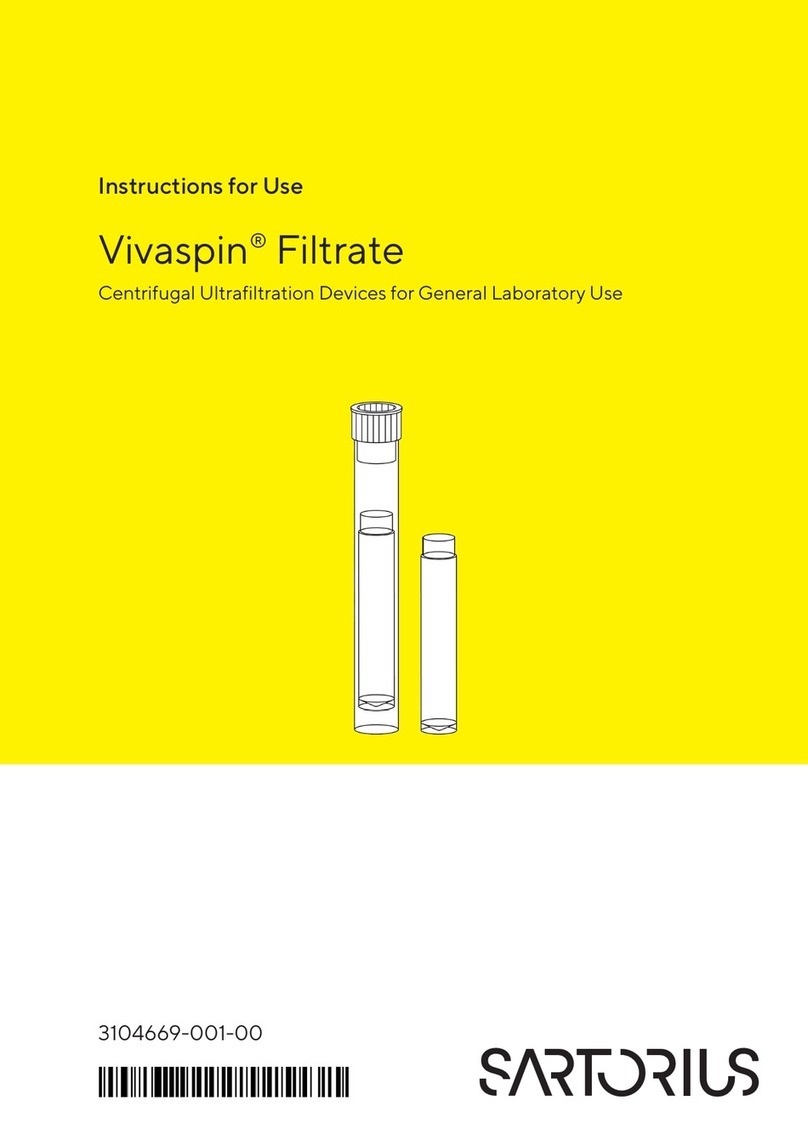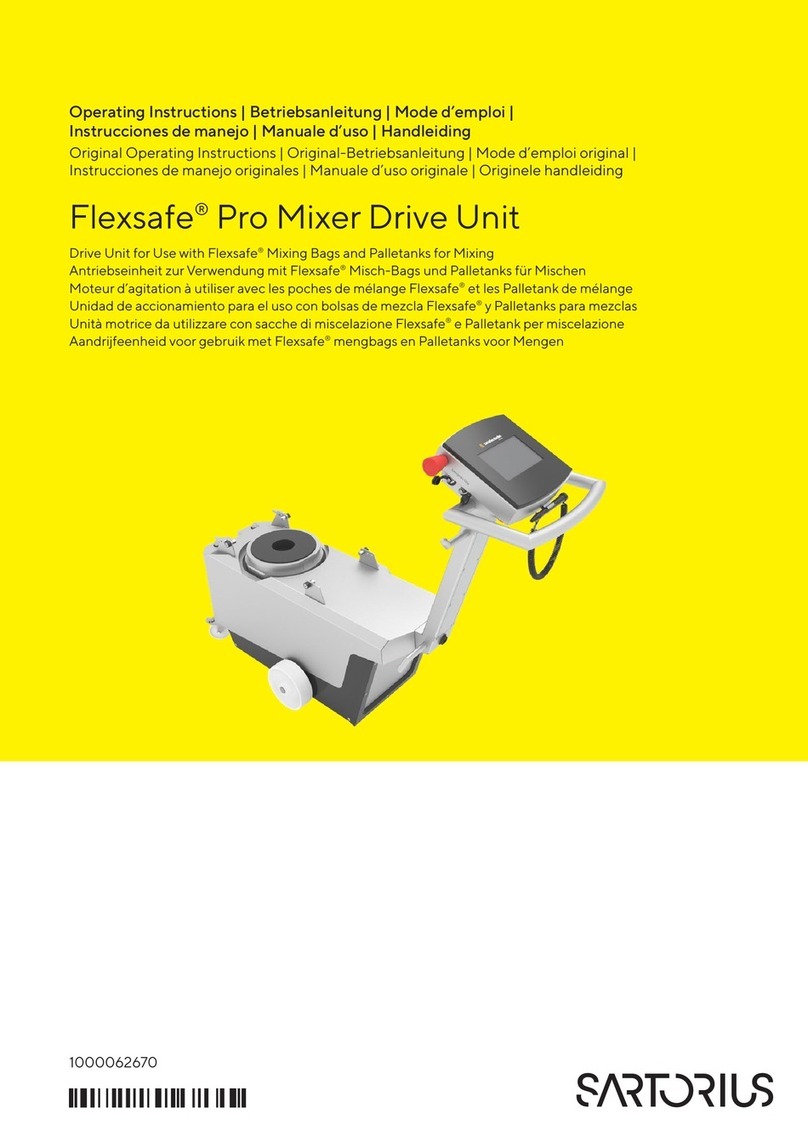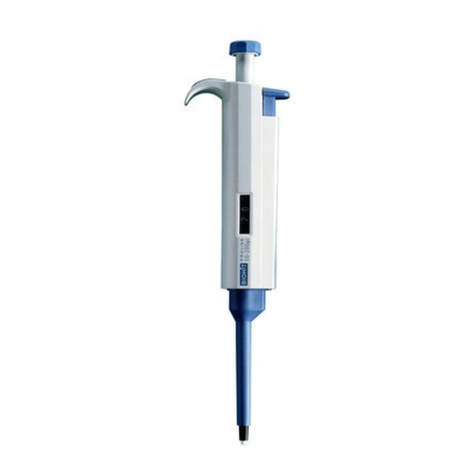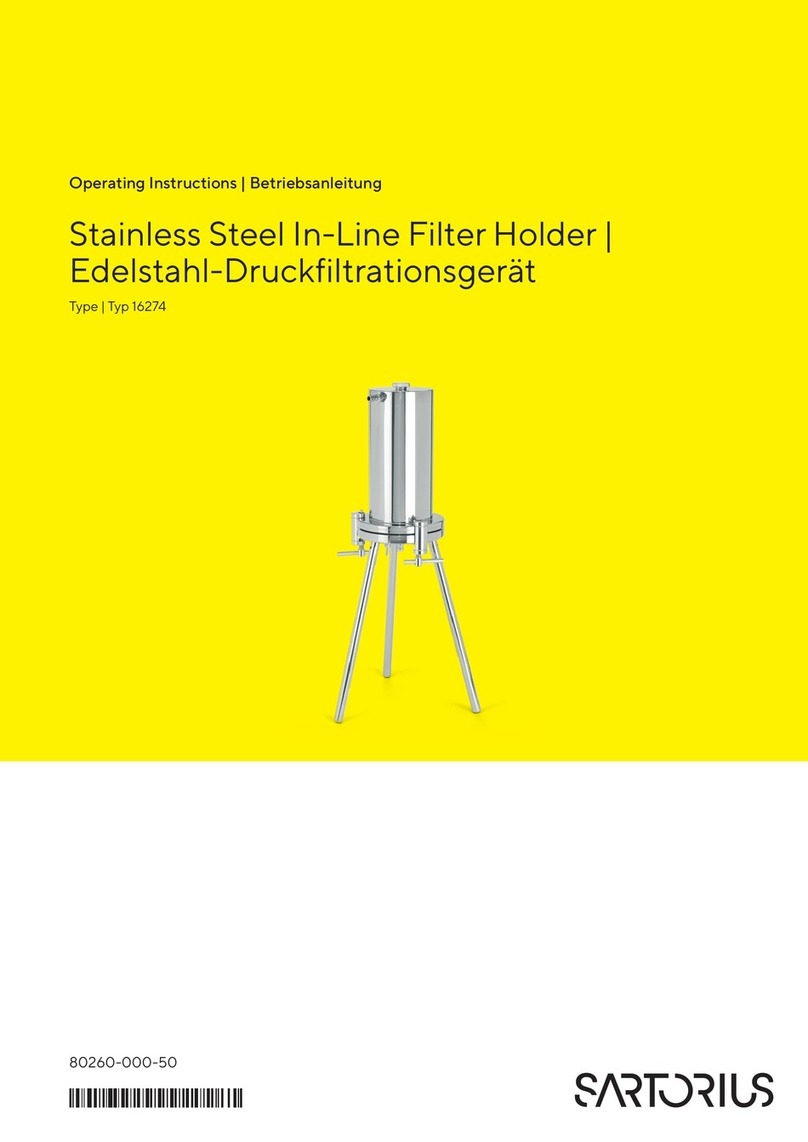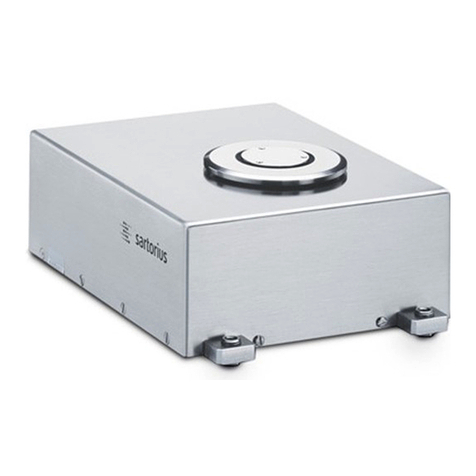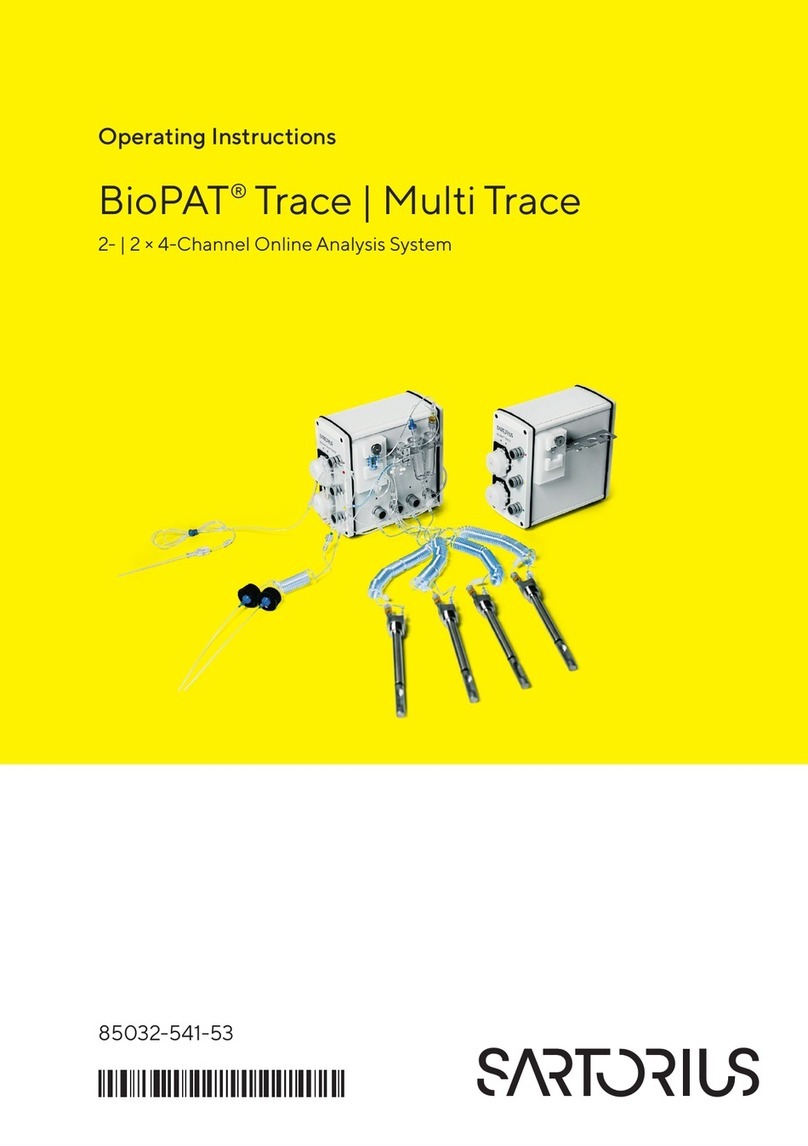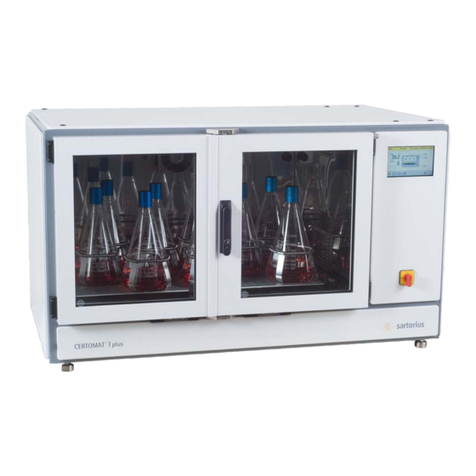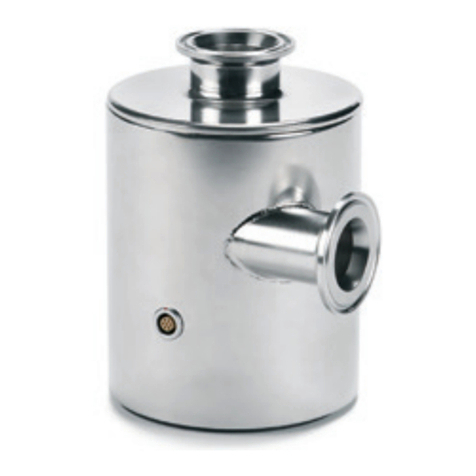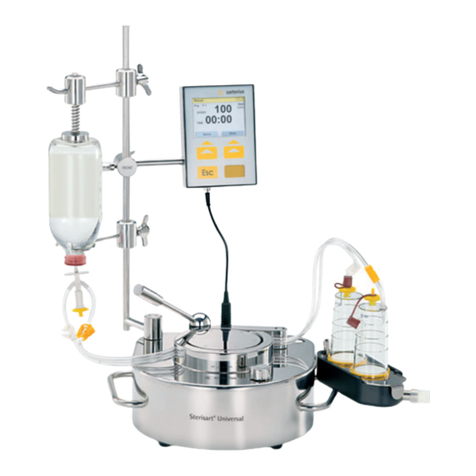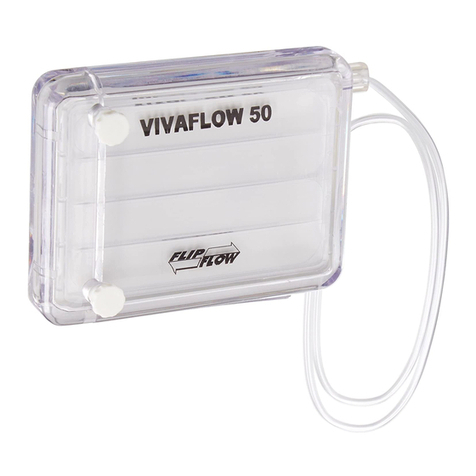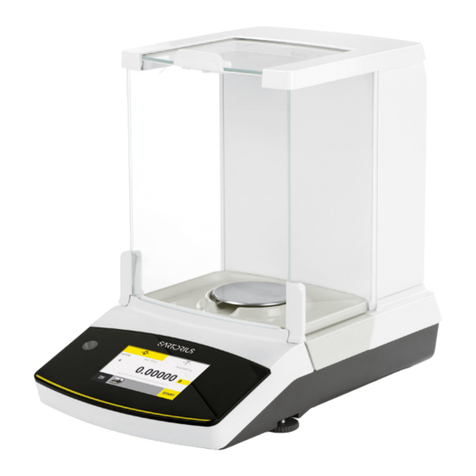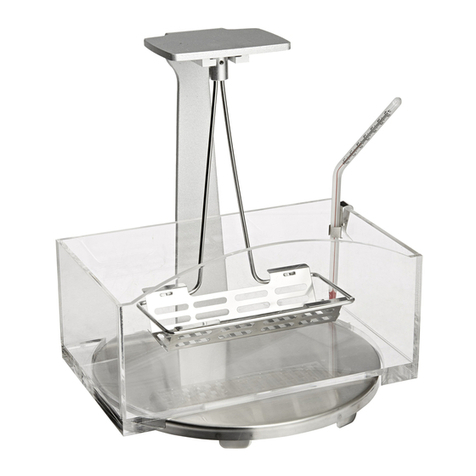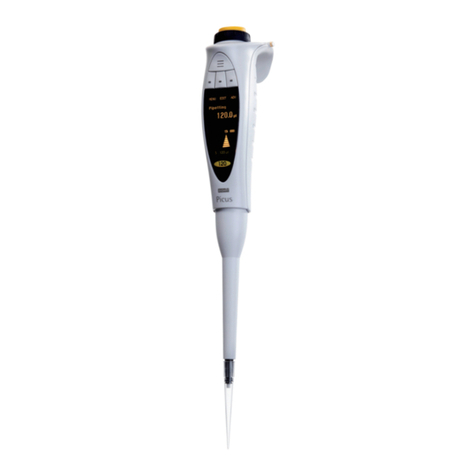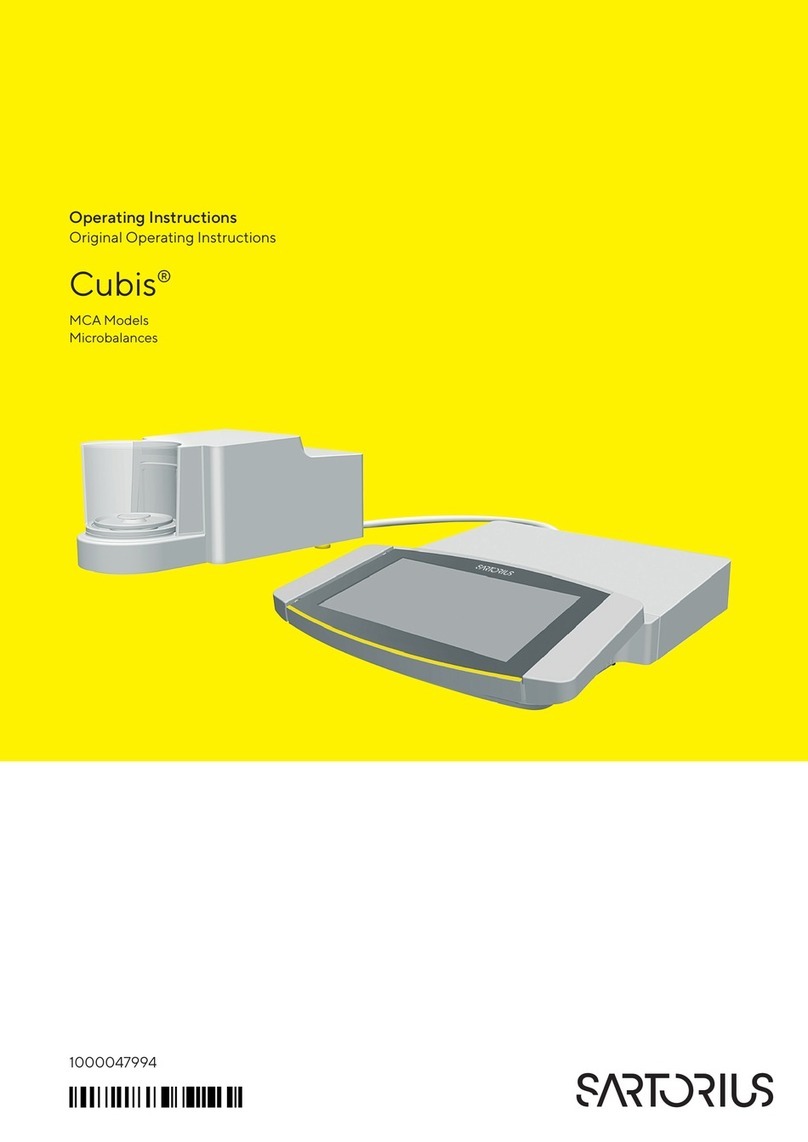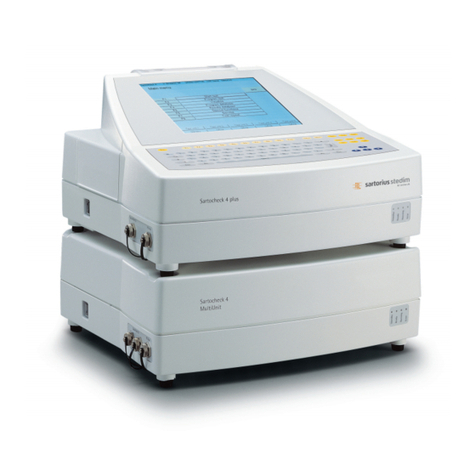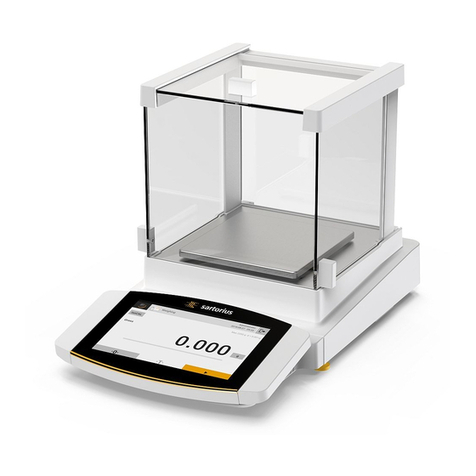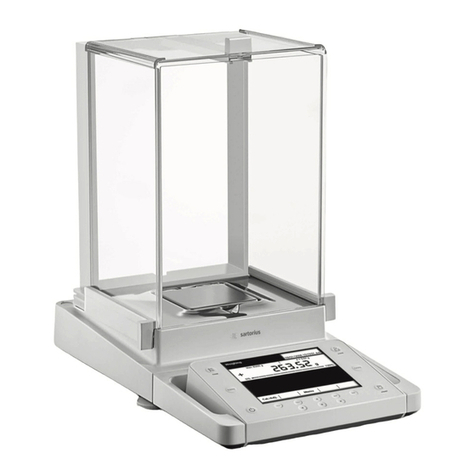
Preparation for Measurement Description of Measurement
Process
To achieve the best possible calculation of density and volume,
the user must be acquainted with the recognized rules for
determining mass and density. For the most part, the system is
unable to correct application errors (e.g. when inserting weights)
because it does not recognize such errors. The user is
responsible for evaluating the results.
Thermostat
Fill the thermostatized basin, including connected thermostats,
with a tempering liquid (content approx. 100 l). A colorless,
non-aggressive liquid with good thermal conductivity must be
used (e.g. distilled water with an additive to prevent chemical
and biological changes in the water).
Select a filling level that permits the liquid to circulate around all
sides of the measurement cell.
The top side of the measurement cell should be covered by
approx. 15 mm of liquid.
Measurement Cell and Measurement Liquid
Fill the measurement cell with a measurement liquid (content
approx. 20 l). A colorless, non-aggressive liquid with high densi-
ty stability must be used (e.g. ultra-pure water or hydrocarbon
compounds such as n-dodecane or n-pentadecane). The user
must ensure that ambient conditions are conducive to providing
stable measuring liquid density.
Select the filling level so that, after loading the weights,
the measurement cell is completely filled, i.e. the surface of the
liquid must reach the supply opening.
Insertion and Thermostatization
The quality of density determination depends on temperature
stability, surface quality and finish of the plummets (weights),
wetting of the plummets, cleanliness, attachment of air bubbles
and impurities etc.
Attention must be paid to these problem areas when inserting
and unloading the respective weights.
Temperature Measurement
A measure for thermostatization (adequate temperature
equalization of weights and liquid) is the difference in tempera-
ture between the two temperature sensors.
The temperature sensors must be positioned diagonally
(i.e., the first sensor is placed in the lower area of the measure-
ment cell and the second sensor is placed in the upper area).
Calibration of the Sensors
All sensors (air temperature, humidity and pressure sensors
and both platinum-resistance thermometers) must be suitably
calibrated at least every 2 years.
In the case of liquid temperature measurement, annual reference
measurements are recommended at an IST 90 fixed reference
point, e.g. the triple point of water or the gallium fixed point.
The correction values can be entered directly in the settings
(see “‘Setup’ Dialog”).
Basically, the volume of weights is calculated in two steps:
– 1) Calculation of the density of the test liquid using
a reference weight of known mass and volume.
To do this, the weight values of the empty comparator
suspension mechanism plus the substitution weight
are compared with the weight values of the comparator
suspension mechanism plus the density reference.
This comparison takes place semi-automatically.
The presence of the user is required.
– 2) Calculation of the test weight volume by direct
comparison using a reference weight of known mass and
volume.
To do this, the weight values of the comparator suspension
mechanism plus the reference weight are compared with
the weight values of the comparator suspension mechanism
plus the density reference.
This comparison takes place fully automatically. The presence
of the user is not required.
During preparation, care must be taken to ensure that the
buoyancy force of the test specimen is approximately the same
as the buoyancy force of the reference weight (to achieve the
best result with the least measurement uncertainty). However,
it is also possible to use the weighing range of the comparator
balance (300 g) to compare weights and reference weights
whose buoyancy force differs by up to 300 g.
Process
Dry Weighing
Calculation of the weight values of test weights (WtL) in
comparison with reference weights in air (WRL) under ambient
conditions (tLL, rHLL, pLL).
The results of these weight calculations and their ambient
parameters must be entered into the program (database).
– With Direct Calculation of Liquid Density (Option 1)
Selecting the Substitution Weight
In the volume comparator, substitution weights compensate
for the differences in the various weight values calculated for
different masses and make them suitable for the comparator.
The use of substitution weights is necessary if, during density
determination, the achievable weight values of the empty
comparator suspension mechanism, on the one hand, and the
liquid reference weight, on the other hand, do not lie within
the measuring range of the comparator balance.
Substitution weights are selected in accordance with the
estimated buoyancy force of the immersed liquid reference
(see “Other Functions”):
An approximate measurement for the mass (mSub) of the
substitution weight results from the calculation of the density
of the test liquid when weighing a silicon sphere as the density
reference weight (density approx. 2329 kg/m3; mass [mK]) in
water (density approx. 998 kg/m3):
mSub = mK · 0.4285
5
